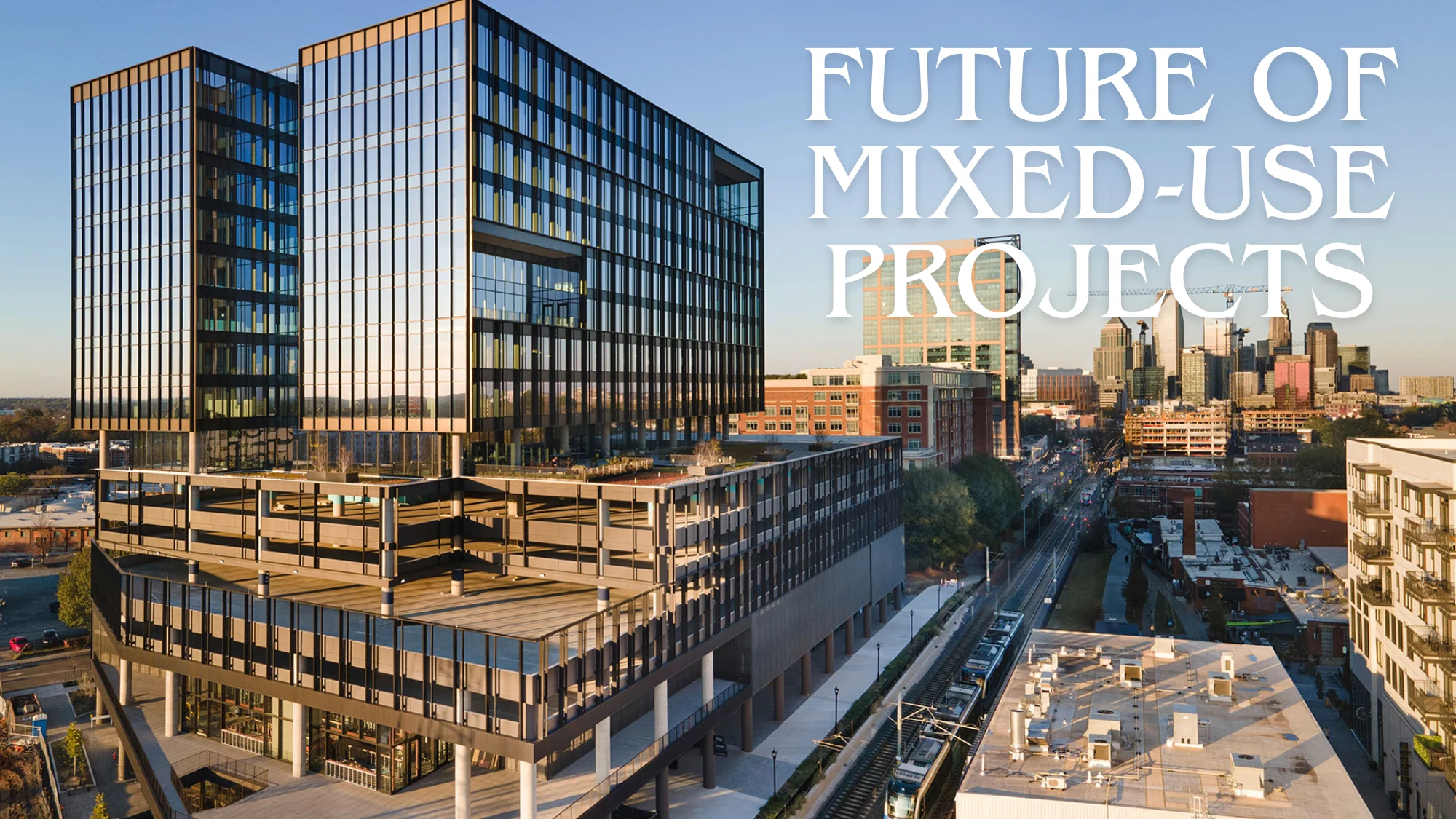Future of Mixed-Use Projects
Read latest blogs and articles from Housystan

The Information mentioned here was last updated on:
4/12/2025Future of Mixed-Use Projects: Shaping Tomorrow’s Urban Living
Cities across the world are changing faster than ever. With the rise of urban populations, limited land availability, and evolving lifestyles, the idea of separating spaces for living, working, and leisure is becoming outdated. In its place, mixed-use developments projects that combine residential, commercial, and recreational areas in one integrated space are becoming the new face of modern urban planning.
The future of mixed-use projects looks promising, as they respond directly to the demands of sustainability, convenience, and community-oriented living. As cities continue to expand vertically rather than horizontally, the way people experience urban life is undergoing a transformation.
- Verified Tenants/Buyers
- Unlimited Property Listing
- Zero subscription/charges fee
Traditional city planning separated functions into distinct zones: residential suburbs, business districts, and retail areas. This model worked for decades but also created challenges such as traffic congestion, long commutes, and reduced quality of life. The modern generation, particularly millennials and Gen Z, values time, convenience, and lifestyle experiences leading to a growing preference for walkable, multi-purpose environments.
Mixed-use projects cater to these priorities by placing homes, offices, restaurants, shopping areas, and entertainment venues within the same development. This design eliminates the need for long travel times, supports local economies, and fosters social interaction. The "15-minute city" concept, which promotes having all essential services within a short walk or bike ride, aligns perfectly with the goals of mixed-use developments.
The rise of mixed-use projects is not only a lifestyle trend but also an economic strategy. Developers and investors are increasingly drawn to the model because it spreads financial risk across multiple revenue streams housing, retail, and office leases instead of relying on one sector.
From an environmental standpoint, these projects reduce carbon emissions by encouraging public transport, walking, and cycling. Compact developments also make better use of land, reducing urban sprawl and preserving green spaces. Sustainability is no longer just a buzzword; it’s a business imperative. Energy-efficient buildings, green rooftops, and shared utilities are now standard features in many new developments.
Moreover, these projects often revitalize underused urban areas. Transforming old industrial zones or neglected downtowns into lively mixed-use hubs attracts new residents, businesses, and visitors. Cities like Singapore, Copenhagen, and New York are prime examples of how such revitalization can reshape entire neighborhoods into thriving communities.
The future of mixed-use projects will be heavily influenced by technology. Smart city innovations from digital building management systems to AI-powered energy monitoring are making these developments more efficient and adaptable.
The growing trend of remote and hybrid work further supports the mixed-use concept. With more people working from home or nearby coworking spaces, developments are integrating flexible office setups, shared meeting rooms, and high-speed internet infrastructure. This adaptability ensures that spaces remain relevant even as work habits evolve.
Beyond convenience, mixed-use projects are redefining what community means in modern cities. By blending residential and commercial areas, they encourage daily interaction among residents, business owners, and visitors. This creates a strong sense of belonging that traditional neighborhoods often struggle to maintain.
Developers are focusing on placemaking designing environments that promote human connection. Outdoor plazas, community gardens, cultural spaces, and pedestrian-friendly streets are becoming central elements. People are no longer just tenants or customers; they are active participants in a shared ecosystem.
Additionally, these projects support diverse lifestyles. From luxury apartments to affordable housing, boutique stores to major retail outlets, and fine dining to local cafes the variety attracts people from different backgrounds, creating socially inclusive communities.
Despite their many benefits, mixed-use projects come with challenges. High initial costs, complex zoning regulations, and the need for coordinated planning can make them difficult to execute. Balancing the interests of multiple stakeholders residents, businesses, and local authorities requires careful management.
There’s also the risk of gentrification, where the introduction of high-end developments raises property values and pushes out long-term residents. To prevent this, urban planners must prioritize inclusivity, ensuring a fair mix of housing types and price ranges.
Another key factor is ensuring that each component of a mixed-use project complements the others. For example, retail spaces must be curated to meet local demand rather than relying solely on large chains. Successful developments often prioritize local businesses and cultural elements that reflect the identity of the community.
Worldwide, cities are embracing the mixed-use model at an accelerating pace. In Asia, mega-projects like Malaysia’s TRX District and China’s Taikoo Li developments are setting new benchmarks for integrated design. In North America, urban hubs such as Miami, Austin, and Toronto are leading the way with live-work-play neighborhoods that blend sustainability with high-end amenities.
Europe, known for its pedestrian-friendly cities, continues to refine mixed-use concepts through adaptive reuse transforming old factories, warehouses, and train stations into vibrant urban quarters. Meanwhile, in the Middle East, developments like Dubai Creek Harbour showcase how luxury and sustainability can coexist in large-scale mixed-use settings.
Each region adapts the concept to its cultural, economic, and environmental context, proving that mixed-use development is not a one-size-fits-all model but a flexible framework for urban evolution.
As the world continues to urbanize, the demand for spaces that combine function, sustainability, and human connection will only increase. The future of mixed-use projects lies in their ability to adapt to integrate technology, promote environmental balance, and prioritize the needs of people over rigid planning models.
In essence, mixed-use developments are more than just real estate trends; they are the foundation of how future cities will grow — vertically, efficiently, and inclusively. They represent a shift toward a more connected, sustainable, and fulfilling way of living, one where the boundaries between work, life, and leisure fade into a seamless urban experience.